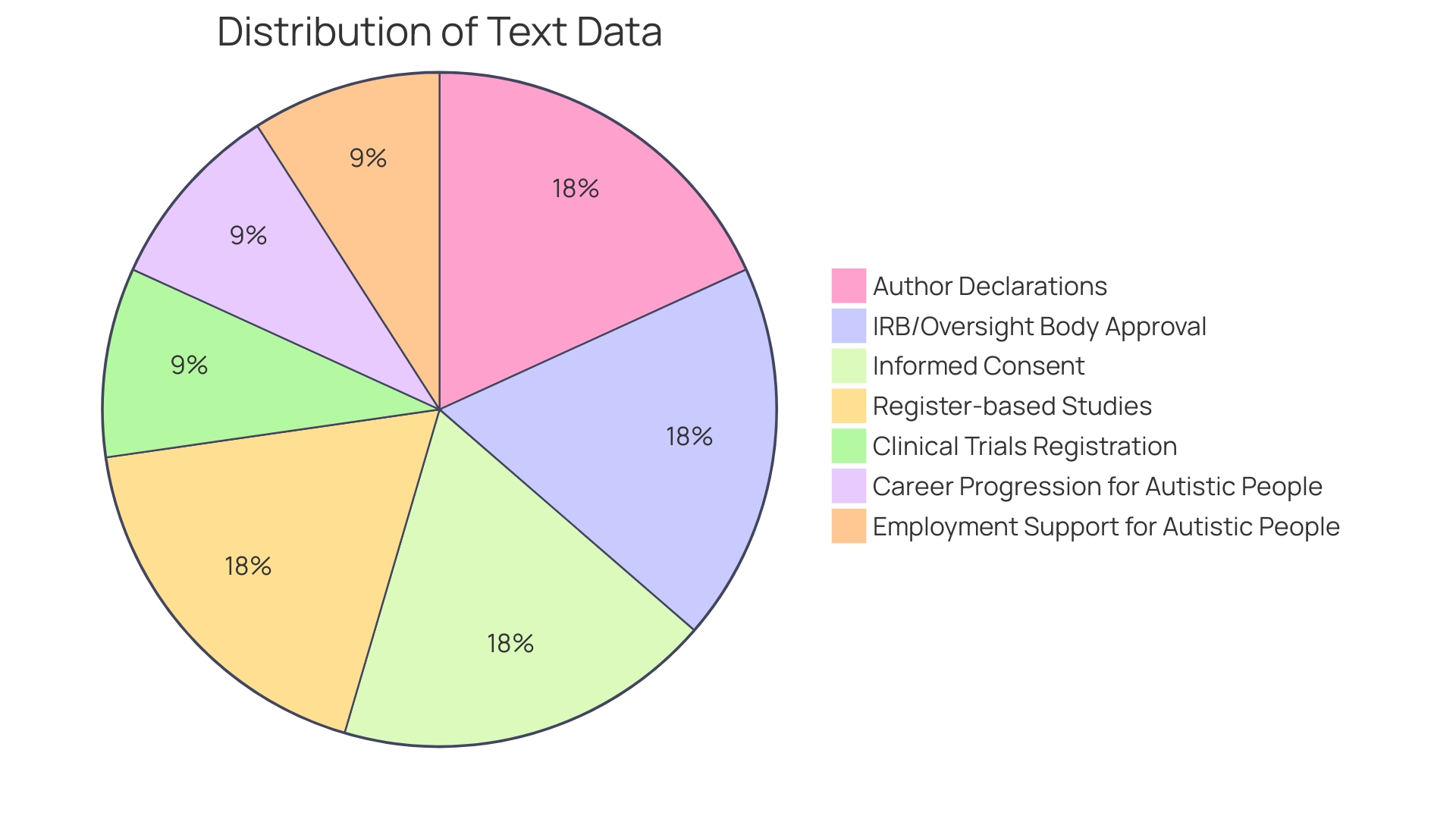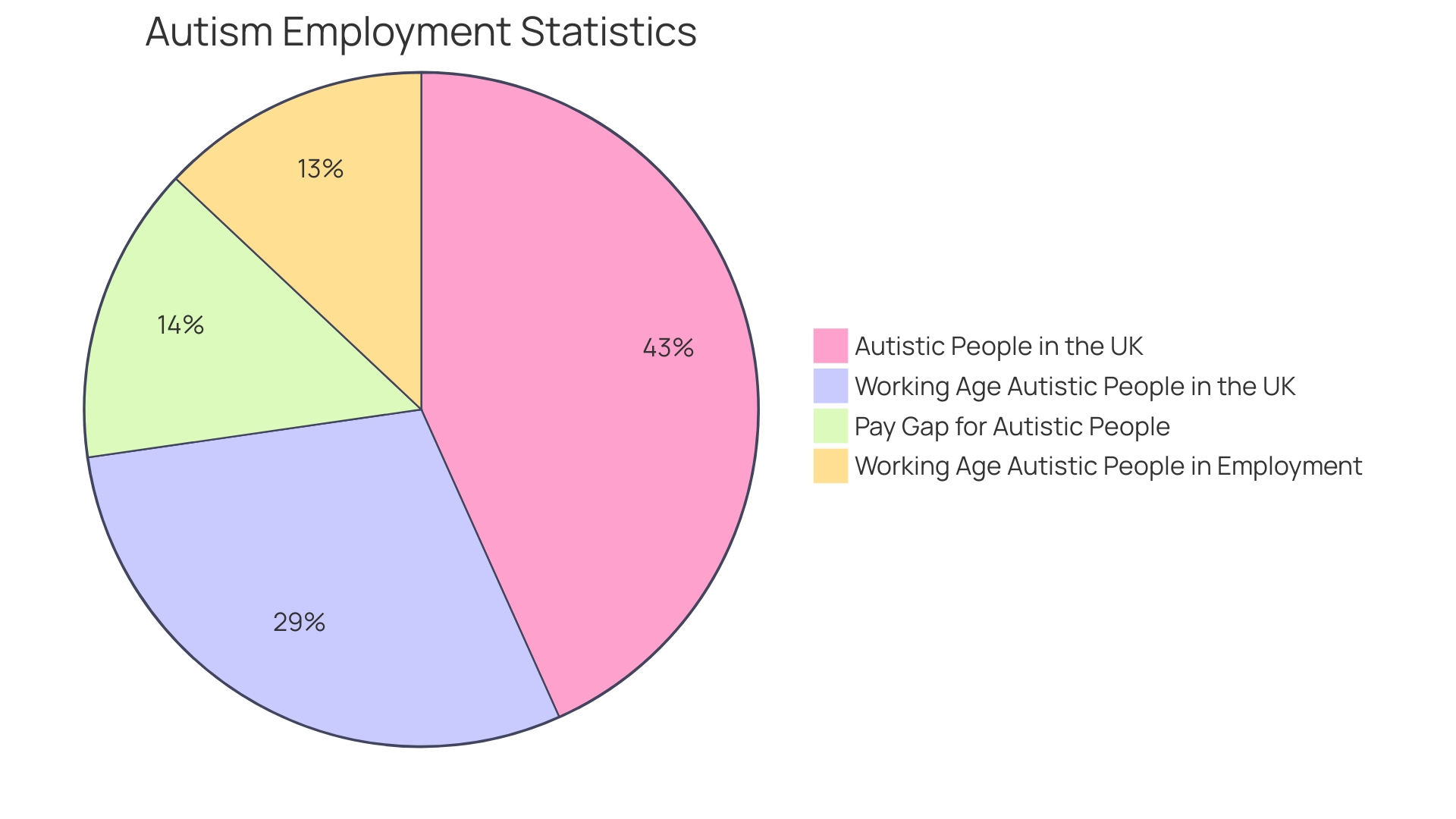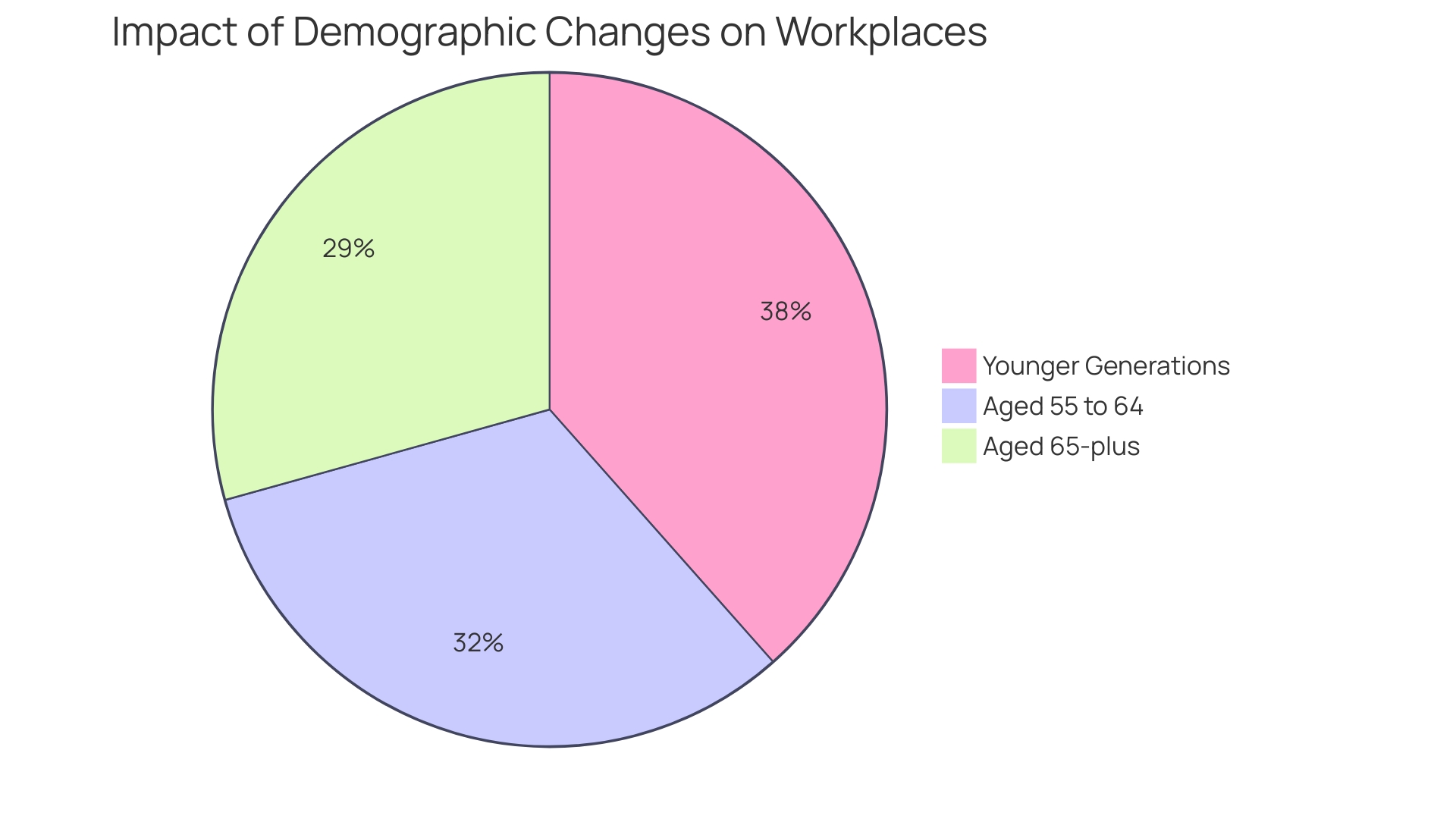Introduction
Autism Spectrum Disorder (ASD) is a complex neurodevelopmental condition that affects individuals in various ways, impacting their social skills, communication, and behavior. With a prevalence of 1 in 36 individuals, it is essential to recognize and understand the challenges faced by those on the autism spectrum. Early diagnosis and intervention play a crucial role in providing support and resources that can greatly enhance the quality of life for individuals with ASD.
In this article, we will explore the prevalence of autism, common misconceptions surrounding the disorder, diagnostic criteria and symptoms, the impact of autism on daily life, co-occurring conditions such as autism and ADHD, the importance of early intervention and support, challenges faced by autistic individuals in the workplace, the role of advocacy and awareness in changing perceptions, and future directions in autism research and support. By fostering a society that is inclusive and supportive of neurodiversity, we can create a more empowered and inclusive world for individuals with autism and their families.
What is Autism Spectrum Disorder (ASD)?
Autism Spectrum Disorder (ASD) is a complex neurodevelopmental condition, manifested through a myriad of behaviors affecting an individual's social skills, communication, and behavior. Each person with ASD exhibits a unique combination of symptoms and abilities, which is why ASD is regarded as a 'spectrum'—it captures a wide variety of experiences and challenges.
Autism is characterized by persistent differences in how individuals engage in interpersonal relationships and communication across various situations. They may have restricted and repetitive behavior patterns and intense interests that are rigid and highly focused. For some, these signs can include repeating sounds or words known as echolalia, a strong preference for routine, and distinct sensitivities to sensory inputs.
According to the Centers for Disease Control and Prevention (CDC), autism may affect as many as 1 in 36 individuals. Recognizing autism early in life can be pivotal, allowing for early intervention strategies that support a fuller, more independent life. While the causes of autism are still being explored, brain scans have revealed differences in brain structure between those with ASD and neurotypical individuals, pointing to a genetic basis for the disorder, despite common misconceptions that vaccines or parenting styles are to blame.
Advancements in technology, such as AI, are improving the early diagnosis of autism, offering hope for timely support and intervention. The UC Davis MIND Institute stands as a beacon of research and education, aiming to deepen our understanding of autism and develop tailored, equitable support systems. It is essential to acknowledge that autism continues throughout a person's life, influencing their interactions with friends, teachers, co-workers, and others.
Awareness and proper diagnosis are critical, as they can lead to a better quality of life for those with ASD and their families.
Prevalence of Autism: Key Statistics
Autism Spectrum Disorder (ASD) is a complex neurodevelopmental condition that's more prevalent than many realize, with recent data indicating that about 1 in 36 individuals are on the autism spectrum. Recognized for a range of symptoms and behaviors, ASD is described as a spectrum because it presents differently in each person and can vary significantly in severity. The condition is characterized by persistent challenges in social interaction, communication, and the presence of restricted and repetitive behaviors, which can manifest in a multitude of ways, such as a strong preference for sameness or heightened sensitivity to sensory input.
The origins of autism are still being explored, with researchers acknowledging that differences in brain structure or function are at play. Brain scans have revealed distinct variations in the brains of individuals with autism compared to neurotypical development. While genetics and heredity are believed to contribute to the likelihood of developing ASD, no single cause has been identified, and it's important to dispel myths such as vaccines or parenting styles as potential causes.
Understanding and acknowledging the prevalence of autism is crucial, as it underscores the importance of early screening and diagnosis. Through early identification, individuals can gain access to vital resources and support that can greatly enhance their quality of life. The significance of this support is echoed in the words of a researcher who, inspired by a sibling with disabilities, dedicates their life to advancing our understanding of autism: "I keep her in mind all the time and she influences my research on a daily basis."
This personal connection to the autism community is a powerful reminder of the human element behind the statistics and the profound impact that informed advocacy and research can have on the lives of those on the spectrum and their families.
Common Misconceptions About Autism
Autism Spectrum Disorder (ASD) is a complex neurodevelopmental disorder with a broad range of symptoms, abilities, and levels of disability. Autism is characterized by challenges in communication and social interactions, as well as restricted and repetitive behaviors. These challenges can manifest differently from person to person, making autism a "spectrum condition."
Despite these differences, individuals with autism often possess unique strengths and capacities.
A prevalent misconception is that autism is synonymous with a lack of intelligence or an inability to communicate effectively. However, this is far from the truth. For instance, some individuals with autism may have extraordinary abilities in areas such as music, art, math, or memory.
Brain scans have shown differences in the shape and structure of the brain in individuals with autism compared to neurotypical development, highlighting the neurological underpinnings of the disorder.
One of the most damaging myths about autism is the false claim that vaccines cause the condition. This has been thoroughly refuted by extensive scientific research. In fact, studies have shown that there is no single known cause for autism.
Instead, it is believed to result from a combination of genetic and environmental factors. The importance of debunking such misinformation cannot be overstated, as it impedes the understanding, acceptance, and support that individuals with autism and their families need.
Diagnosis is a critical step in providing support to individuals with autism. It is based on a set of behaviors outlined in the American Psychiatric Association’s Diagnostic and Statistical Manual (DSM-5) and typically involves persistent differences in communication and social interaction across various environments, along with restricted and repetitive behavior patterns.
Research continues to evolve, and it's important to recognize that autism is a global condition, affecting people across all ethnic, racial, and socioeconomic groups. A recent increase in research has led to a better understanding of autism in diverse populations, although most studies still originate from Western countries. This points to the need for more inclusive research efforts globally.
Current statistics from the Centers for Disease Control and Prevention estimate that autism occurs in as many as 1 in 44 children, with males being diagnosed more frequently than females. Understanding these numbers is vital for healthcare providers across all specialties, as they are likely to encounter autistic patients and must be aware of their unique strengths and challenges, especially in relation to healthcare access and quality.
In summary, autism is a multifaceted spectrum condition that is characterized by a distinct set of behaviors. Early diagnosis and intervention can significantly benefit individuals with autism, allowing them to access resources that support their development and well-being. It is essential to continue advocating for accurate information about autism to foster a society that is inclusive and supportive of neurodiversity.
Diagnostic Criteria and Symptoms
Autism Spectrum Disorder (ASD) is a neurodevelopmental condition with a spectrum that affects individuals differently and to varying degrees. It manifests through a range of behaviors that can include challenges with social interaction, communication, and repetitive patterns of behavior. The diagnosis of ASD follows the criteria outlined in the Diagnostic and Statistical Manual (DSM-5), which specifies the need for persistent differences in communication and social interaction across multiple contexts, as well as restricted and repetitive behavior patterns.
The process of diagnosing autism is multi-faceted and involves a comprehensive assessment by a team of professionals, which may include pediatricians, psychologists, and speech therapists. Observations of behavior, developmental history, and input from caregivers form the basis of the evaluation. While there's a growing acceptance of self-diagnosis within the autistic and neurodivergent community, a formal diagnosis can sometimes be pivotal in accessing the necessary support and resources.
In terms of prevalence, it's estimated that as many as 1 in 36 individuals are on the autism spectrum. Despite the absence of a known single cause for autism, research suggests that it may be linked to genetic and environmental factors. Importantly, autism is not caused by vaccines, parenting styles, or nutrition.
Early diagnosis is critical, as it can lead to early intervention services that support communication, social skills, and behavioral management, enhancing the child's development and functioning.
The National Disability Insurance Scheme (NDIS) in Australia exemplifies the commitment to providing support for individuals with autism, offering personalized plans to meet specific needs. Through early intervention, education, and community support, individuals with autism and their families can navigate the challenges and harness the potential of those on the spectrum.

The Impact of Autism on Daily Life
Autism spectrum disorder (ASD) encompasses a range of neurodevelopmental variations, manifesting uniquely in each individual. People with autism often experience difficulties in social communication and may exhibit repetitive behaviors or have intensely focused interests. Further, their ways of learning, moving, and paying attention often differ, which calls for a reframing of our expectations and understanding that individuals with ASD are 'differently-abled.'
Despite the challenges, providing appropriate support and accommodations enables those with autism to succeed in various life aspects, from interpersonal connections to academic achievements.
Recent research sheds light on the adult years of individuals with ASD, a period that remains under-explored. Studies emphasize the importance of continued support as individuals transition into adulthood, where the demands of independent living and employment present new challenges. The Centers for Disease Control and Prevention report a notable increase in the prevalence of autism diagnoses among children, now estimated at 1 in 36.
To address the daily complexities faced by individuals with autism, initiatives such as the Autism Welcoming Initiative have been established. They focus on training businesses to create environments where individuals with ASD can feel comfortable and thrive. Additionally, innovative programs aim to improve the employment rate of autistic individuals by exploring effective recruitment, retention, and development strategies.
Statistics indicate a pressing need for such efforts, with only 3 in 10 working-age autistic individuals being employed, compared to 8 in 10 non-disabled people.
Understanding the signs and symptoms of autism in adults is vital, as many may have been previously undiagnosed or misdiagnosed. Recognizing these signs is the first step towards identifying undiagnosed ASD and ensuring that every individual has the opportunity to live a fulfilling and meaningful life. Advocates and researchers alike emphasize the potential and hope that each new day brings for individuals with autism, advocating for acceptance, support, and opportunities that cater to their unique talents and perspectives.
Co-occurring Conditions: Autism and ADHD
Individuals on the autism spectrum often experience a broad range of challenges, including difficulties with social communication and a tendency towards repetitive behaviors. At the same time, they may exhibit highly focused interests or over- or under-sensitivity to their environments. Each person's experience with autism is unique, and the condition encompasses a spectrum of severity, with some individuals requiring minimal support and others needing more substantial assistance.
Autism is neurodevelopmental and is not indicative of intellectual disability, as only about half of autistic individuals have a co-occurring intellectual disability.
Adding to the complexity, it's not uncommon for individuals with autism to have co-occurring conditions. In fact, ADHD is one such condition that frequently intersects with autism, affecting an individual's attention and activity levels. This co-occurrence, sometimes referred to as 'AuDHD' or 'AutiADHD' on social media, presents a blend of characteristics that might seem contradictory, such as a preference for routine in autism versus a desire for novelty in ADHD.
However, understanding this intersection is crucial for providing tailored support.
The relationship between autism and ADHD reflects the broader concept of neurodiversity, which acknowledges that brain differences are normal and should be recognized and respected. The term 'neurodivergence' includes various conditions, such as ADHD and dyslexia, that diverge from typical neurological functioning. Recognizing the neurodivergent nature of autism and ADHD is reshaping thinking in science and medicine, challenging the idea of these conditions as disorders and instead championing the differences in individual thinking and behavior.
Recent studies highlight the importance of considering genetic and environmental factors in the development of autism. Additionally, ongoing research, including the use of artificial intelligence in early diagnosis, continues to provide insights into the complex nature of autism and its intersection with other conditions. With a systematic review indicating that 37% of children with autism also have ADHD, it is apparent that these conditions often coexist, necessitating an integrated approach to intervention and support.
In the quest to support those with autism and ADHD, it is essential to consider the unique needs resulting from their co-occurrence. Tailored interventions must take into account the full spectrum of challenges and strengths associated with both conditions to foster a more inclusive and understanding environment for neurodivergent individuals.
The Importance of Early Intervention and Support
Understanding the depth of autism, a neurodevelopmental disorder characterized by social communication challenges and repetitive behaviors, is an essential part of supporting children with this condition. Dr. David (Dan) R. Offord emphasized the need for equitable support systems for children with disabilities, including autism, to ensure they receive fair opportunities for growth and development in all aspects of their lives. Early intervention plays a pivotal role in this, as research indicates that timely and appropriate support can significantly improve communication, social skills, and overall development for children with autism.
The potential for better outcomes is reflected in the work of researchers like Warren Jones, PhD, who has contributed over two decades to the understanding of 'social visual engagement'—how children engage with their social environment—and its variations in children with autism. Clinical studies involving more than 1,500 children have shown that early diagnosis, facilitated by advanced technologies like automated devices that monitor children's eye movements, can lead to effective early interventions.
Moreover, understanding the genetic and environmental factors that contribute to autism, and addressing the mental health needs of infants and toddlers, establishes a strong foundation for their future well-being. As such, caregivers are encouraged to stay informed about new findings, treatments, and approaches, always verifying information with experts and being mindful of the benefits and risks of any interventions or medications prescribed to their children. This informed approach to early intervention ensures that we are not only addressing the immediate needs of children with autism but also nurturing their long-term mental health and capacity to live independently as adults.

Challenges Faced by Autistic Individuals in the Workplace
Navigating the complexities of the workplace can be particularly challenging for autistic individuals, who may encounter hurdles with social communication, sensory sensitivities, and executive functioning. However, with the right support and understanding, they have much to contribute to their professional environments. Recent insights suggest that while autistic adults often possess a strong desire to work, they are employed at significantly lower rates than their non-disabled peers.
Data from Autistica indicates that only roughly 30% of working-age autistic individuals are in employment, which is notably less than the 50% of all disabled people and 80% of non-disabled people who are employed.
To address this discrepancy, it's vital to create inclusive workspaces that not only welcome autistic individuals but also nurture their career advancement. As Associate Professor Hala Annabi emphasizes in the Autism @ Work Playbook, the real challenge lies not just in hiring neurodivergent individuals for entry-level positions but in supporting their career progression. The playbook underscores the importance of helping neurodivergent employees visualize their career pathways and effectively advocate for promotions.
Companies are recognizing the untapped potential of neurodivergent talent and are implementing hiring programs tailored to their needs. Microsoft, for example, has seen success with its neurodiversity hiring program, which has welcomed around 300 full-time neurodivergent employees. The program provides accommodations such as extended time for answering interview questions and breaks between meetings, allowing candidates like Natalie Worden-Cowe to demonstrate their true capabilities and thrive once onboard.
However, career progression remains a significant hurdle for many autistic professionals. Research reveals that autistic individuals often face barriers to advancement, such as receiving fewer opportunities upon disclosing their neurodiversity or lacking sufficient support to progress. A review of 33 studies found that while many autistic people aspire to advance in their careers, employment support such as mentorship could be key in overcoming these obstacles.
In light of these findings, a national review has been initiated to explore how to better recruit, retain, and develop autistic talent. This endeavor aims to identify and dismantle barriers while fostering initiatives to raise awareness, reduce stigma, and leverage the productivity of autistic employees. The goal over the next five years is to significantly improve the employment rate for autistic individuals, ensuring they can not only secure positions but also progress in fulfilling careers.

Advocacy and Awareness: Changing Perceptions
Understanding autism and advocating for inclusivity is crucial for building a society that appreciates the unique contributions of individuals with autism. Through collective efforts in advocacy, we can foster equitable access to education and employment, ensuring that each person is valued for their distinct skills and perspectives. Embracing diversity not only enriches our communities but also drives economic growth, as seen in studies where companies with inclusive hiring practices outperform their counterparts.
This inclusion leads to higher revenues and a more robust economy, potentially boosting the U.S. GDP by billions. Such progress reflects the broader, transformative impact of open science, where shared knowledge and collaboration have accelerated advancements, as witnessed during the rapid development of COVID-19 vaccines. Similarly, we must push for open dialogue and equitable practices in autism research and advocacy, respecting the varied identities and experiences of those with autism.
By acknowledging the strengths and talents of autistic individuals and ensuring their voices are heard in policy and research, we can create a more inclusive and dynamic society.

Future Directions in Autism Research and Support
Autism research is a dynamic field that's constantly advancing, with researchers tirelessly exploring the intricacies of this neurodevelopmental disorder. Clinicians and researchers are dedicated to unraveling the causes of autism and crafting interventions that can make a real difference in the lives of those affected. A prime example of this dedication is the move from quasi-experimental studies to randomized-controlled trials, providing more reliable data on the effectiveness of various interventions.
Open science plays a crucial role in this quest for knowledge. By sharing scientific discoveries promptly and openly, we facilitate international collaborations that can lead to breakthroughs at an unprecedented speed, as evidenced by the global effort during the pandemic to sequence the virus and develop vaccines.
The Interagency Autism Coordinating Committee (IACC) exemplifies this commitment to progress. As a federal advisory committee created by Congress, the IACC enhances coordination and communication across different federal agencies, promoting partnerships with the autism community. The IACC's composition reflects a broad range of perspectives, including those of autistic adults, parents, family members, and professionals, ensuring that their recommendations are grounded in diverse experiences and expertise.
Researchers are not just confined to their labs; the outcomes of their studies have tangible impacts on individuals and families. The passion of researchers for their work with young children with autism and their families is palpable. Celebrating each child's progress, no matter how small, is a testament to the dedication of these professionals.
This enthusiasm drives the continuous exploration of new strategies to support children's development, particularly in communication skills.
In supporting autism research, we're not just contributing to the scientific understanding of the disorder, but we're also advocating for the development of more effective interventions and a better quality of life for individuals on the autism spectrum. It's a collective effort, with every discovery building on the last, propelling us toward a future where every individual with autism can thrive.
Conclusion
In conclusion, Autism Spectrum Disorder (ASD) is a complex neurodevelopmental condition that affects social skills, communication, and behavior. Early diagnosis and intervention are crucial for enhancing the quality of life for individuals with ASD. It is important to dispel misconceptions about autism, such as the false claim of vaccine causation.
Diagnosis is based on specific behaviors outlined in the DSM-5, and early screening is vital for access to support. Autism has a significant impact on daily life, from relationships to academic achievements. Initiatives are being implemented to create inclusive environments and improve employment opportunities.
Co-occurring conditions, like Autism and ADHD, require tailored support. Advocacy and awareness play a vital role in changing perceptions and fostering inclusivity. The future of autism research and support shows promise through ongoing advancements and collaborations.
By fostering an inclusive society that supports neurodiversity, we can empower individuals with autism and their families to thrive.




